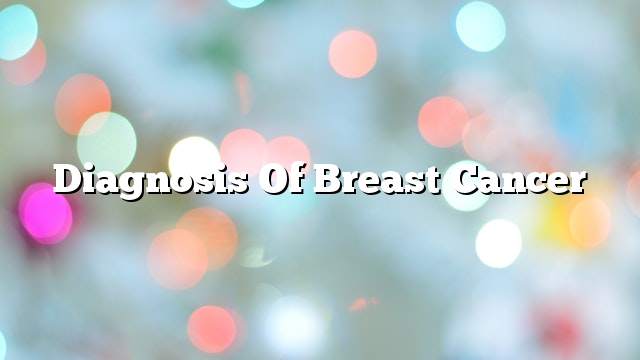The diagnosis is based on the so-called triple assessment of the patient A clinical assessment with imaging and a tissue test. When these three assessments are combined, the result is 99.9% positive. The clinical evaluation includes taking the history with breast examination
Photography is done in several ways The most important of which is the mammogram, and this device is very useful for detecting breast cancer, especially after forty, and before the forty does not fit this device and because of the conglomeration of tissues Breast And the low proportion of fat in them, but the more age increases the proportion of fat in the breast and the sensitivity of this device, and there are 5% of women who have cancer, but not detected by this device
So if the mammogram is normal It does not mean that the patient is 100% free of cancer, and the devices used in breast imaging are also an ultrasound device, especially in young women, to distinguish the solid mass from the sac and also to identify areas abnormally tissue in the breast, but the ultrasound device does not help in Periodic follow-up status for women without breast cancer to try early detection of cancer
Also, the CT tomography may be helpful especially in women Who are previously infected with the disease to see if they hit again, as well as the central tomography is useful in women with a strong family history of breast cancer, and the third evaluation is tissue evaluation by taking a sample of the breast and then examined laboratory.
Breast cancer is one of the most common diseases in the world , And there are many factors that may lead to an increase in the likelihood of infection, most important family history and exposure to large amounts of estrogen, and is divided into many types, divided into cancerous and obese and in the end turn into lava and invasive so must be treated, and is also divided into lobster breast cancer and The most important symptom is the presence of a tumor in the breast with a change in the color of the skin and protrusions in the skin as well as increased secretions of the nipple, especially blood secretions, and is focused on the diagnosis of symptoms with clinical examination and mammography in several ways including mammograms, ultrasound and the central class device, The diagnosis is supported in sampling for histological examination. The treatment includes several types of treatments are surgical and radiation therapy, chemotherapy and hormone therapy.
